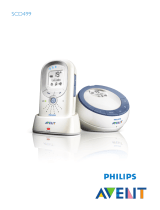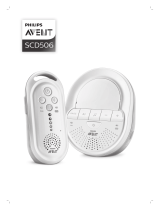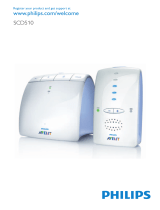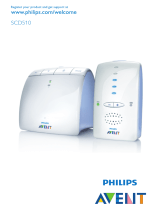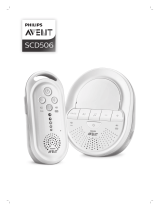
6
Some of the following information may not apply to your particular product; however, when using
baby monitor equipment, basic safety precautions should always be followed to reduce the risk of
re, electric shock and injury to persons, including the following:
1 Read these instructions.
2 Keep these instructions.
3 Heed all warnings.
4 Follow all instructions.
5 Do not use this apparatus near water.
6 Clean only with dry cloth.
7 Do not block any ventilation openings. Install in accordance with the manufacturer’s instructions.
8 Do not install near any heat sources such as radiators, heat registers, stoves or other apparatus
(including ampliers) that produce heat.
9 Do not defeat the safety purpose of the polarized or grounding-type plug. A polarized plug has
two blades with one wider than the other. A grounding-type plug has two blades and a third
grounding prong. The wide blade or the third prong is provided for your safety. If the provided
plug does not t into your outlet, consult an electrician for replacement of the obsolete outlet.
10 Protect the power cord from being walked on or pinched particularly at plugs, convenience
receptacles, and the point where they exit from the apparatus.
11 Only use attachments/accessories specied by the manufacturer.
12 Unplug this appliance during lightning storms or when unused for long periods of time.
13 Refer all servicing to qualied service personnel. Servicing is required when the apparatus has
been damaged in any way, such as power-supply cord or plug is damaged, liquid has been spilled
or objects have fallen into the apparatus, the apparatus has been exposed to rain or moisture,
does not operate normally, or has been dropped. For assistance visit our website www.philips.
com/AVENT or call 1-800-54-AVENT (1-800-542-8368).
14 This baby monitor is intended as an aid. It is not a substitute for responsible and proper adult
supervision and should not be used as such.
15 Use this appliance only for its intended use as described in this manual.
16 Unplug this product from the wall outlet before cleaning. Do not use liquid cleaners or aerosol
cleaners.
17 Products should not be used while you are in a bathtub, shower or pool. Immersion of the
product in water could cause an electrical shock.
18 The apparatus shall not be exposed to dripping or splashing and no objects lled with liquids,
such as vases, shall be placed on the apparatus.
19 This product should be operated only from the type of power source indicated on the type
plate of the adapters (A10, B5). If you are not sure of the type of power supply to your home,
consult your dealer or local power company.
20 Do not overload wall outlets and extension cords as this can result in the risk of re or electric
shock.
21 Never push objects of any kind into this product through casing slots as they may touch
dangerous voltage points or short out parts that could result in a risk of re or electric shock.
Never spill liquid of any kind on the product.
22 To reduce the risk of electric shock, do not disassemble this product, but visit our website www.
philips.com/AVENT or call 1-800-54-AVENT (1-800-542-8368) for assistance. Opening or
removing covers (except battery compartment lids) may expose you to dangerous voltage or
other risks. Incorrect reassembly can cause electric shock when the appliance is subsequently
used.















